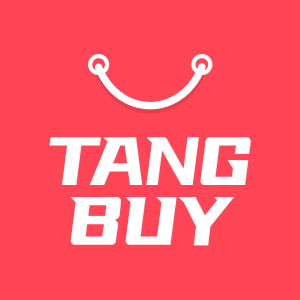Transform your dropshipping business with AI-based pricing strategies

You want to make more money and work easier in dropshipping. If you use AI for pricing, you can decide faster. You also get better results. Look at this table:
Pricing Method | Efficiency Rate | Conversion Rate |
|---|---|---|
AI-driven Pricing | 85-90% | 4-6% |
Traditional Pricing | 60-70% | 2-3% |
Maciej Kraus says, “AI will change how companies set prices. Businesses will change prices based on demand, customer behaviour, and other things.” Are you ready to see how AI pricing can help you do better?
Key Takeaways
AI-driven pricing helps you work faster and better. It can help you make good pricing choices.
Watch your costs carefully to handle small profit margins. Small changes can help your business do better.
Use AI to check the market in real time. This helps you spot trends and change prices when needed.
Let AI track your competitors’ prices for you. This keeps your prices fair and helps you react fast to changes.
Use AI to guess how much people will buy. This stops you from having too much or too little stock.
Automated price changes save you time and stop mistakes. This lets you spend more time growing your business.
Pick AI tools that work well with your online shop. This makes setting up and running things easier.
Check your pricing plan and AI tools often. This helps you get the most out of your business.
Dropshipping Pricing Challenges

Thin Margins
You probably know that dropshipping often means working with very slim profits. Most dropshippers see margins of only 10% to 20% on their products. This gets even tighter if you sell in busy markets like electronics or fashion. When you have thin margins, you feel the pressure every time costs go up. You might struggle to pay for ads, handle returns, or even answer customer questions quickly. If your supplier raises prices or shipping costs jump, you have little room to adjust. You also depend on third-party suppliers, which makes things riskier. If they make a mistake, you pay the price.
Here are some common issues you face with thin margins:
You can’t easily cover extra costs.
It’s hard to spend money on marketing.
Customer service can suffer.
Supplier problems hit your bottom line fast.
Tip: Always keep an eye on your costs and look for ways to boost your margins, even if it’s just by a few percent.
Market Volatility
The dropshipping world changes quickly. Prices go up and down all the time. One day, your supplier offers a great deal. The next day, the price jumps, or a new competitor enters the market. You need to react fast, or you risk losing sales. If you don’t update your prices, you might end up selling at a loss or scaring away customers with prices that are too high.
You also have to deal with:
Shipping costs that change without warning.
New trends that make old products less popular.
Competitors who drop their prices overnight.
A recent industry survey found that many dropshippers struggle with:
Reduced profit margins because of long supply chains and lots of competition.
Complicated shipping costs, especially when you use more than one supplier.
The need to check competitor prices all the time to stay ahead.
Manual Pricing Issues
If you set prices by hand, you know how much work it takes. You have to watch your competitors, check your supplier’s prices, and guess what your customers will pay. This process takes a lot of time and can lead to mistakes. You might miss a price change from your supplier or forget to update your shop. That can cost you sales or even your reputation.
Manual pricing also means:
You spend hours on tasks that software could do in minutes.
You risk human error, like typing the wrong price.
You can’t react quickly to market changes.
Note: Automating your pricing can save you time and help you avoid costly mistakes. You’ll have more time to focus on growing your business.
How to Use AI for Pricing
Real-Time Market Analysis
You want to do well in dropshipping. Real-time market analysis helps you stay ahead. When you use AI, you can see trends as they happen. AI tools check millions of products and prices every minute. They can guess what will sell soon. You can set your prices to match the real market, not just guess.
Here is what happens when you use AI for real-time analysis:
You notice trends before your competitors do.
You can match your stock with what is popular now.
You avoid running out or keeping too much slow stock.
AI also helps you find prices that are not good for you. If your price is too high, you might lose sales. If it is too low, you lose profit. With AI, you can change prices fast and keep your advantage. Many sellers say automation and AI help them make more money and grow quickly.
Tip: Let AI do the hard work with data. You can focus on smart choices.
Competitor Price Tracking
You must watch your competitors. They change prices often. If you want more sales, you need to know their moves. AI makes this simple. It checks your competitors’ prices, matches products, and shows your position.
Here are some top AI tools for competitor price tracking:
Provider | Features | Pricing |
|---|---|---|
Bright Data | AI analysis, promotion tracking | Starting at $1,000/month |
Skuuudle | Pricing intelligence, product matching | €10,000 – €1,000,000 |
Price2Spy | Monitoring, analytics, historical data | $157.95 – $1,579.95/month |
Competera | Price management, autopricing | Custom |
Prisync | Dynamic pricing, Shopify integration | $99 – $399/month |
PriceShape | Market insights, data export | €299/month |
Flipkart Commerce Cloud | Ad placement, AI matching | Custom |
Pricefy | Alerts/reports, dynamic pricing | Free – $189/month |
Visualping | Compliance, SEO monitoring | $100/month |
Dataweave | AI-driven pricing and intelligence | $199/month – Custom |
These tools help you compare your prices. You can see if you charge too much or too little. You get alerts when a competitor lowers their price. You can then act fast, so you do not lose sales.
Note: Use AI to watch your rivals. You will always know your place in the market.
Demand Forecasting

Guessing what will sell can waste money. Demand forecasting with AI removes the guessing. AI checks your sales history, stock, and market trends. It learns from this and gets better over time.
Let us see how AI compares to old ways:
Method | Accuracy |
|---|---|
Traditional | Lower accuracy because it uses old trends and fixed ideas. |
AI-Based | Higher accuracy as AI keeps learning and improves predictions. |
Companies using AI for demand forecasting see a 10–20% rise in accuracy. AI checks many things at once, like season changes, promotions, and even social media talk. You get a clear idea of what to stock and when.
Criterion | Traditional Methods | AI-Based Method |
|---|---|---|
Forecast Accuracy | Moderate: high error rate in fast-changing markets | High: uses many factors and self-learning models. |
Callout: When you use AI for demand forecasting, you avoid having too much or too little stock. You can plan better and grow your business with confidence.
Automated Price Adjustments
Imagine you never have to worry about changing your prices by hand again. Automated price adjustments do this job for you. When you set up these systems, you let smart software change your prices based on real facts, not just guesses. You can stay ahead of your competitors and keep your profits healthy.
Here’s how automated price adjustments work for your dropshipping shop:
Collect Data: The system checks your sales, your stock, and what your competitors charge.
Analyse Trends: It looks for patterns, like when sales go up or down.
Set Rules: You decide the lowest and highest prices you want. The software follows your rules.
Adjust Prices: The system changes your prices in real time. You do not have to lift a finger.
Tip: You can set alerts for big price changes. This way, you always know what is happening in your shop.
Let’s look at some benefits you get when you use automated price adjustments:
Save Time: You do not need to check prices every day.
React Fast: The system changes prices right away when the market shifts.
Reduce Mistakes: No more typing errors or missed updates.
Boost Profits: You can catch more sales and avoid selling too cheap.
Here is a simple table to show the difference:
Method | Speed | Accuracy | Effort Needed |
|---|---|---|---|
Manual Price Changes | Slow | Medium | High |
Automated Adjustments | Instant | High | Low |
You can use AI to make these price changes smarter. The software learns from your sales and your market. It can spot the best times to raise or lower prices. You do not have to guess anymore. You can focus on growing your business while the system handles the numbers.
Callout: Automated price adjustments help you stay competitive. You can win more customers and keep your profits steady, even when the market changes fast.
AI Tools and Technologies

Machine Learning Algorithms
You might wonder how AI knows when to change your prices. Machine learning algorithms do the heavy lifting. These smart models look at lots of data, like how many people want your product, what your competitors charge, and how customers behave on your site. They spot patterns that you might miss.
Dynamic pricing uses these algorithms to make quick decisions. The system checks market conditions and adjusts prices in real time. This means you can react to changes in demand or stock levels without delay. You do not have to guess anymore. The AI learns from every sale and every click. It keeps getting better at finding the right price to boost your profits or sales.
Tip: Let machine learning handle the maths. You can focus on growing your shop.
Price Optimisation Software
You do not need to be a tech expert to use AI for pricing. Many software solutions make it easy for you. These tools come in different levels, so you can pick one that fits your business size and needs.
Here are some top-rated options:
Beginners: Try free or freemium tools like Zendrop, Spocket (Starter), or Modalyst. These help you get started with basic automation.
Mid-tier brands: Use mid-range tools such as Dropified, Sellbrite, or Onport (Starter). These offer more features for growing shops.
High-volume sellers: Go for enterprise solutions like Flxpoint, Spark Shipping, or Linnworks. These handle large inventories and complex pricing rules.
Most of these tools let you set rules, track your sales, and see reports. You can test different prices and see what works best. Some even suggest prices for you, based on real-time data.
Note: Start with a tool that matches your current needs. You can always upgrade as your business grows.
E-commerce Platform Integration
You want your AI pricing tool to work smoothly with your online shop. Good news—most top tools connect with platforms like Shopify or Magento. This makes setup quick and easy.
Here’s a simple way to get started:
Understand your business needs and goals.
Choose an AI pricing tool that works with your e-commerce platform.
Monitor the tool’s performance and make changes if needed.
You can also test new pricing strategies on a few products first. This helps you see what works before you roll it out to your whole shop. Regular checks help you fine-tune your approach and keep your edge.
When you integrate AI pricing tools, you often see more sales and higher profits. You stay ahead of your competitors and make smarter choices every day.
Callout: Seamless integration means less hassle for you and more time to focus on your customers.
Implementing AI in Dropshipping
Assess Current Strategy
Before you jump into new tech, take a good look at your current pricing strategy. Ask yourself a few questions. Do you set prices by hand? Do you change prices often? How do you track your competitors? Write down what works and what feels slow or hard. This step helps you spot gaps and see where you can improve.
You might want to make a simple table like this:
Area | What Works Well | What Needs Work |
|---|---|---|
Price Updates | ||
Competitor Tracking | ||
Stock Management |
Fill it in honestly. You will see where you spend too much time or miss chances to earn more.
Tip: Be honest about your weak spots. You cannot fix what you do not see.
Select AI Solutions

Now you know your weak points, you can look for the right AI tools. Not every tool fits every shop. Some focus on price changes. Others help with stock or watch your rivals. Think about your budget and your goals. Do you want to save time, boost profits, or both?
Here are a few things to check when you pick an AI solution:
Does it work with your shop platform, like Shopify or WooCommerce?
Can it handle your number of products?
Does it offer support if you get stuck?
Is it easy to set up and use?
You can start with a free trial if you feel unsure. Test the tool on a few products first. See if it makes your life easier.
Note: Choose a tool that matches your needs today. You can always upgrade later.
Data Collection Setup
You cannot use AI without good data. Start by making sure your shop collects the right info. This means tracking sales, prices, stock, and even customer visits. Most e-commerce platforms let you export this data. Check your settings and turn on all the tracking you can.
Here is a quick checklist:
Turn on sales tracking in your shop.
Export your product and price lists.
Collect data on customer visits and clicks.
Save records of past price changes.
If you use more than one supplier, gather data from each one. Clean data helps AI learn faster and make better choices.
Callout: Good data is the fuel for smart pricing. Spend time setting it up right, and you will see better results.
Model Training
Now that you have your data ready, it’s time to train your AI model. This step helps your pricing tool learn from your shop’s history. You want your AI to spot patterns and make smart choices for you.
What does model training mean?
You feed your AI tool with your sales, prices, and customer data. The tool looks for links between price changes and sales. It learns what works and what doesn’t. Over time, it gets better at picking the right price.
Here’s how you can train your model:
Upload Your Data
Start by giving your AI tool all the data you collected. This includes sales numbers, product prices, stock levels, and even customer clicks.Set Your Goals
Tell the AI what you want. Do you want more sales, higher profits, or to beat your competitors? Clear goals help the AI know what to aim for.Choose Training Settings
Many tools let you pick how the AI learns. You can set how often it updates, how much data it uses, or which products to focus on.Run the Training
Press start and let the AI do its job. It will look for patterns in your data. This might take a few hours or even a day, depending on your shop size.Check the Results
When the training ends, look at the first results. Did the AI find good prices? Are the suggestions close to what you expect? If not, you can tweak the settings and try again.
Tip: Don’t worry if the first try isn’t perfect. AI gets better with more data and practice. Keep feeding it new sales and price info.
Here’s a simple table to show what you need for model training:
Step | What You Need |
|---|---|
Data Upload | Sales, prices, stock, clicks |
Goal Setting | Clear targets (profit, sales) |
Training Settings | Frequency, product focus |
Review Results | Compare with your own ideas |
You don’t need to be a tech expert. Most AI tools guide you step by step. If you get stuck, many offer help or tutorials.
Callout: The more you train your AI, the smarter it gets. You’ll see better price suggestions and more sales over time.
Case Studies and Results
Success Stories
You might wonder if AI pricing really works for dropshipping. Let’s look at some real examples. A small business selling tech gadgets decided to try AI-powered pricing. They wanted to boost profits and keep up with fast-changing prices. After just three months, they saw their profit margins jump by 20%. Customers noticed the fair prices and started buying more. The owner said, “I finally feel like I’m not guessing anymore. The system does the hard work, and I can focus on finding new products.”
Another shop selling clothes online faced slow sales during quiet months. They used AI to change prices based on what their competitors charged and how much stock they had. This simple change helped them increase sales by 30% in off-peak seasons. The owner shared, “I used to worry about slow months. Now, I see steady orders all year.”
Tip: You don’t need to be a big company to see results. Even small shops can win with smart pricing.
Lessons Learned

You can learn a lot from these stories. First, you need good data. The more you track your sales and prices, the better your AI tool will work. Don’t forget to check your results often. AI can help, but you still need to watch for mistakes or odd price changes.
Here are some key lessons:
Start small. Test AI pricing on a few products first.
Keep your data clean and up to date.
Set clear goals, like more sales or higher profits.
Review your results every week.
Note: AI is a tool, not magic. You still need to guide it and make smart choices.
Measurable Benefits
When you use AI for pricing, you can see real changes in your business. Here are some benefits dropshippers have reported:
Profit margins can rise by 20% or more in just a few months.
You can sell up to 30% more during slow periods.
Customers feel happier because your prices stay fair and competitive.
You spend less time changing prices and more time growing your shop.
Benefit | Before AI Pricing | After AI Pricing |
|---|---|---|
Profit Margins | 10-15% | 20-35% |
Off-Peak Sales Growth | Flat | +30% |
Customer Satisfaction | Average | High |
Time Spent on Pricing | High | Low |
😊 With AI, you can work smarter, not harder. Your shop can grow, and you can enjoy more free time.
Actionable Steps to Use AI
Readiness Assessment
Before you jump in, you need to check if your business is ready for AI. This step helps you spot what you need and where you can improve. Here’s a simple way to do it:
Look at your customer service. Do you get lots of the same questions? You might want to try chatbots to answer them quickly.
Check your sales data. If you have lots of purchase history, you can use it to make better product suggestions for your customers.
Think about your stock. Are you running out of products or holding too much? AI can help you forecast demand and keep your inventory just right.
Tip: Write down your answers. You’ll see where AI can make the biggest difference.
Implementation Roadmap
Once you know you’re ready, it’s time to plan your next steps. A clear roadmap keeps you on track and helps you avoid mistakes. Here’s a simple plan you can follow:
Choose the right AI tools for your shop. Make sure they fit your needs and work with your platform.
Set up your data collection. Track sales, prices, and customer visits. Good data helps AI work better.
Train your AI model. Feed it your shop’s data and set your goals, like more sales or higher profits.
Test the system on a few products first. Watch how it works and make changes if needed.
Roll out AI pricing to your whole shop. Keep an eye on the results and tweak your settings as you go.
Note: Start small and build up. You’ll learn what works best for your business.
Optimisation Tips
You want to get the most from your AI pricing. Here are some easy ways to boost your results:
Add two lifestyle images and an infographic to each product page. Show your products in real life and highlight their benefits.
Use AI to write product descriptions. Focus on words that help people find your shop and want to buy.
Check your automated workflows often. Make sure everything runs smoothly and fix any problems fast.
Automate tasks like stock management. This cuts down on mistakes and saves you money.
Keep your stock levels just right. Avoid having too much or too little.
Watch your numbers. Look at your sales and profits every week. Change your settings if you spot a problem.
😊 When you use AI, you save time and make smarter choices. Your shop runs better, and you can focus on growing your business.
Addressing Concerns
Complexity and Cost
You might worry that AI pricing sounds complicated or expensive. You’re not alone. Many shop owners feel the same way at first. Setting up AI tools can seem tricky, especially if you haven’t used them before. Some platforms ask for a monthly fee, and you may need to spend time learning how everything works.
Here’s what helps:
Most AI pricing tools offer step-by-step guides. You can follow simple instructions and get started quickly.
Many providers let you try their software for free or at a low cost. You can test features before you commit.
You don’t need to hire a tech expert. Many tools work with your existing shop platform, so you can plug them in and start using them.
Tip: Start small. Pick one tool and use it on a few products. You’ll see results without risking your whole budget.
Data Privacy

You want to keep your customers’ data safe. AI pricing tools use lots of information, so privacy matters. You need to follow rules like GDPR and make sure you’re clear about how you collect and use data. Customers trust you more when you protect their details.
Here’s a table showing how AI pricing tools handle privacy:
Aspect | Description |
|---|---|
Compliance with laws like GDPR is essential for the collection and use of consumer data. | |
Transparency | Companies must be clear about their data collection and usage practices to build consumer trust. |
You can build trust by:
Telling customers how you use their data.
Choosing AI tools that follow privacy laws.
Making privacy a top priority in your shop.
Brands that care about privacy stand out. You gain loyal customers and protect your business from costly mistakes. Managing AI-driven processes also helps you control your budget and keep customers happy.
Note: Trust is crucial in the digital marketplace. When you show you care about privacy, you get a competitive edge.
Human Oversight
AI can do a lot, but you still need to keep an eye on things. You set the rules, check the results, and make changes when needed. Sometimes, AI might suggest a price that doesn’t fit your brand or your goals. You can step in and adjust it.
Here’s how you stay in control:
Review price changes every week.
Set limits for your AI tool so it doesn’t go too high or too low.
Listen to customer feedback and make changes if you see problems.
You’re the boss. AI helps you work faster and smarter, but you make the final decisions. This balance keeps your shop running smoothly and protects your reputation.
😊 Remember, AI is your helper, not your replacement. You guide the process and keep your business on track.
Future of AI in Pricing
Emerging Trends
You might wonder what’s next for AI in dropshipping pricing. The future looks exciting. New trends are changing how you set prices and connect with your customers. Here are some of the biggest shifts you’ll see soon:
Hyper-Personalised Pricing: AI can set prices just for you. It looks at your browsing habits, loyalty, and what you like. You get offers that feel special.
AI and Blockchain Together: These two technologies work side by side. Blockchain makes prices clear and fair. You can trust that you’re getting a good deal.
Voice Commerce Pricing: More people use voice search to shop. AI listens and changes prices based on what you say. You can ask for deals and get instant answers.
Global Expansion: Dynamic pricing is spreading to new markets. As online shopping grows in developing countries, AI helps shops set prices for local buyers.
Emotion AI: This is a new idea. AI can read your feelings from chats or reviews. It might change prices if you seem happy or upset.
😊 The future of AI pricing is all about making shopping easier and more personal for you.
Preparing for Change
You want to stay ahead as AI pricing gets smarter. You can use new tools and strategies to get ready. Here’s a quick look at some AI tools that help you run your dropshipping shop:
Purpose | |
|---|---|
Shopify Magic | Automate store management without inventory |
AI product description tools | Write product descriptions automatically |
Replit Ghostwriter | Help with content creation |
AutoGPT | Automate many daily tasks |
Tidio AI | Improve customer service with chatbots |
You can use these tools to save time and boost your shop’s performance. Try AI-generated product descriptions to make your listings stand out. Use AI for targeted ads so you reach the right customers. Chatbots like Tidio AI answer questions quickly and keep shoppers happy.
Tip: Start with one tool and see how it helps. You’ll learn fast and get ready for bigger changes.
You don’t need to worry about being left behind. Keep learning about new AI features. Test them in your shop. Watch how your customers react. You’ll find new ways to grow and stay competitive.
AI pricing is moving fast. If you stay curious and open to change, you’ll always be ready for what comes next.
When you use AI in your dropshipping shop, you can make better choices about prices. This helps you earn more money. Here is what you get:
Data analytics and automation help you keep up with other shops.
You can act fast when the market changes and keep your customers pleased.
Try out new tools to help your shop. The future of online selling looks good if you use smart technology.
FAQ
What is AI-based pricing in dropshipping?
AI-based pricing uses smart software to set your product prices. The system checks market trends, your sales, and your competitors. You get prices that help you sell more and earn more profit.
Do I need coding skills to use AI pricing tools?
No, you do not need coding skills. Most AI pricing tools have easy dashboards. You can set them up with simple steps. If you get stuck, you can use guides or support.
How often does AI update my prices?
AI can update your prices as often as you want. Some tools change prices every hour. Others do it daily. You choose the best schedule for your shop.
Will AI pricing make my shop too expensive for customers?
No, AI aims to keep your prices fair. It checks what customers want and what your competitors charge. You stay competitive and attract more buyers.
Can I control the price range with AI tools?
Yes, you set the lowest and highest prices. The AI follows your rules. You always have the final say on your shop’s prices.
Is my customer data safe with AI pricing tools?
Most AI tools follow strict privacy rules. They protect your data and your customers’ details. Always choose tools that follow GDPR or similar standards.
What if AI suggests a price I do not like?
You can review all price changes. If you see a price you do not like, you can change it. You stay in control of your shop.
How quickly can I see results after using AI pricing?
You may notice changes in a few weeks. Many shop owners see more sales and higher profits within the first month. Keep checking your results to track progress.

TangBuy: A Smarter Way to Dropship in 2025
If you're looking to stay competitive with dropshipping in 2025, speed and trend-awareness are key. TangBuy helps you stay ahead with real-time product trends, fast fulfilment, and factory-direct sourcing. With over 1 million ready-to-ship items, 24-hour order processing, and seamless Shopify integration, TangBuy makes it easier to test, scale, and succeed in today's fast-moving eCommerce landscape.
See Also
Understanding the Real Expenses of Dropshipping in 2025
Lucrative Dropshipping Concepts to Explore in 2025
Strategies to Manage Shipping Expenses in Dropshipping
Top Dropshipping Markets Expected to Thrive in 2025
Comprehensive Guide to Starting Your Dropshipping Venture in 2025

